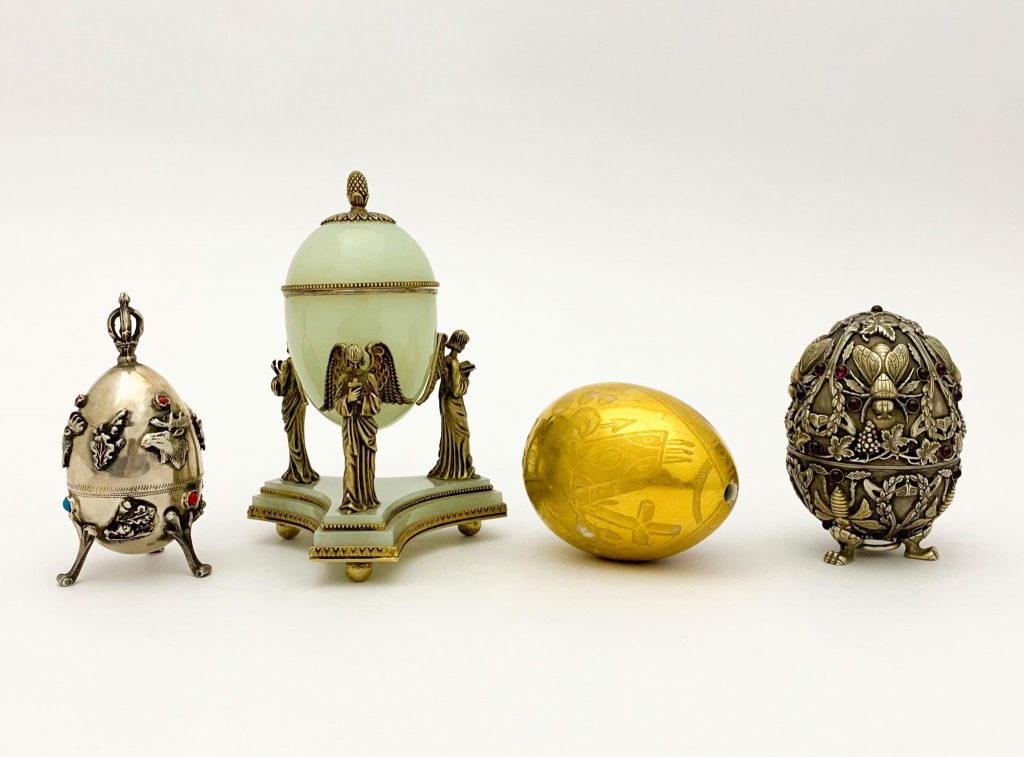During the Easter month until 1 May, the Liepāja 17th -19th century Interior Museum at 24 Kungu Street, will offer its visitors an opportunity to look at four 19th century decorative eggs from the collection of the Zuzeum art centre. The display will be created on the second floor, in the dining room of the family of notary Christoph Wilhelm Stender.
One of the decorative eggs was made in the Fabergé Jewellery House. The egg holder in the Fabergé Collection is shaped in the form of three angels holding the egg on their wings. The top of the egg is decorated with a decorative silver cone, a symbol of immortality and rebirth.
The egg was made by the Finnish jeweller Antti (Anders) Johan, who was registered as a Fabergé employee at the Holström House in 1875. Holström was the leading goldsmith of the Fabergé movement until his death in 1903. Later Antti set up his own firm, but continued to work exclusively with Fabergé. The Fabergé family history is linked to the Baltics. Gustav Fabergé (1814-1893), the founder of the famous jewellery workshop, lived in Pärnu after leaving France and only moved to St Petersburg in 1842.
The Stender family dining room will also feature a decorative silver egg and tray made by Pavel Ovchinnikov (1830-1888) at the Gold and Silverware Factory. Pavel Ovchinnikov was a merchant and the founder of a gold and silverware factory in 1853. Since 1865, the company has been a regular participant in exhibitions throughout Russia and the world, and its products have always been awarded the highest honours -- gold and silver medals, including the Order of the Legion of Honour (Paris, 1867), the Iron Cross (Vienna, 1873), etc. The company's products have gained worldwide fame for the rebirth and development of a national style and for their outstanding quality, particularly in enamel.
The Interior Museum visitors will also have the opportunity to see a silver decorative egg with stones from the "Hunting" series with representations of moose heads and a grouse figure inside. It was made in the workshop of Cyprian Labecki. Commissioned by Josef Sosnkowski. Warsaw, Poland, 1878.
The small display of decorative eggs will be complemented by a porcelain egg with a painting of a scene from the Resurrection of Jesus. The over glaze is covered with gold, carved in gold, painted, second half of the 19th century.
